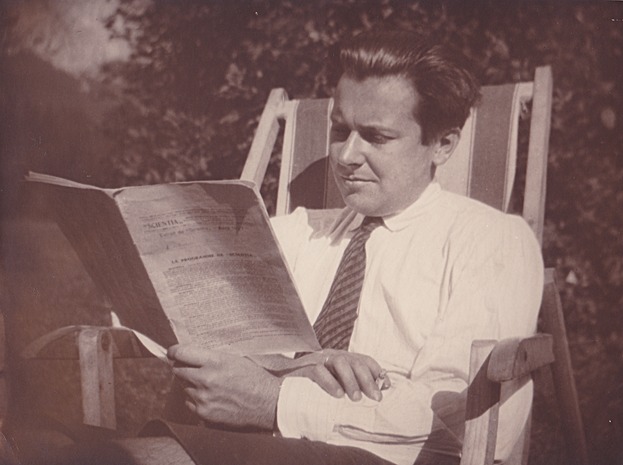If you want to understand life, you cannot just look at the smallest pieces. That was the powerful belief of Ludwig von Bertalanffy, an Austrian biologist and philosopher.
He is the person who created and developed General Systems Theory (GST). Bertalanffy was not happy with how science was working in the 1900s. Science was breaking the world into smaller and smaller parts (reductionism). He believed this approach missed the most important thing: organization.
GST was his plan to find common rules that apply to all systems. His goal was to create a common language to help unify science. This article explores Bertalanffy’s most important ideas, including the open system and dynamic equilibrium.
The Organismic View of Biology
Bertalanffy was born in Vienna in 1901. He started his work as a theoretical biologist. At the time, most scientists saw living things as complex machines. Bertalanffy completely disagreed with this idea.
Rejecting Mechanistic Thinking
He developed an “organismic biology“. This approach demanded that scientists study the organism as a whole, or a system. He believed that the main goal of biology must be to find the “principle of organisation” at all levels of life.
Bertalanffy also disagreed with the idea that biological events could be fully explained by physics and chemistry alone. The distinction between a system and a simple collection of parts is that the system has a specific form of organization.
The Goal of Unified Science
Bertalanffy earned his PhD in Vienna, where he was exposed to a philosophical group called the Vienna Circle. His supervisor, Moritz Schlick, was the Circle’s founder. While Bertalanffy rejected their focus on only empirical science and their lack of values, he was greatly influenced by their goal of creating a unified science. He wanted a common language for all scientific principles.
The Concepts of Openness and Flow
Bertalanffy’s most famous contribution to systems thinking is the concept of the Open System. This idea came from the scientific field of thermodynamics.
Defining the Open System
A system must have a clear boundary that separates it from its environment.
- A closed system only allows energy to cross its boundary. Think of a sealed jar: energy (heat) can escape, but the matter inside stays the same.
- An open system allows both matter and energy to cross the boundary. All living organisms are open systems. They must take in materials (like food) and expel waste to survive.
The genius of General Systems Theory lies in recognizing that living systems are “open systems,” which means they must maintain themselves by continuously exchanging matter and energy with their environment. This continuous process of exchange is what allows living things to maintain their complex organization and form.
Dynamic Equilibrium
Because an open system is always bringing in new material and breaking down old material, it is never static or still. It is in a constant state of flux.
Bertalanffy called this steady but flowing state dynamic equilibrium. The original German term was Fliessgleichgewicht, which means “flowing balance”. The system’s identity (its basic form) stays the same, even though its component parts are constantly changing.
Another key idea Bertalanffy used was equifinality. This is the principle that a system can reach the same final state or end point from many different starting points.
GST’s Humanistic Vision
Bertalanffy strongly believed that GST should serve a purpose beyond just science. He was an advocate for the role of values and ethics in science.
The Critique of the ‘Robot Model’
Bertalanffy was a strong critic of the prevailing psychological model of the time, which he called the “robot model“. This model used the cybernetic idea of homeostasis (negative feedback) to suggest that the ideal individual simply aims for a stable, internal balance.
He argued that if a system’s main goal is just “homeostatic maintenance,” the desired result is a “well-oiled robot”. Bertalanffy felt that this focus on static stability risked promoting social conservatism and was too mechanistic. He wanted GST to emphasize the dynamic, creative, and evolving nature of living systems.
Conclusion
Ludwig von Bertalanffy provided the essential foundation for systems thinking by establishing General Systems Theory (GST). He was the first to explicitly name the field and define its most powerful concepts. By moving science toward holism and defining life by the rules of the open system and dynamic equilibrium, he created a universal framework. Bertalanffy’s work ensured that organization, relationships, and the whole system would be at the heart of systems studies.



